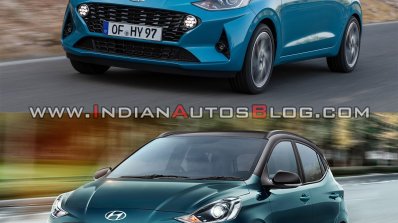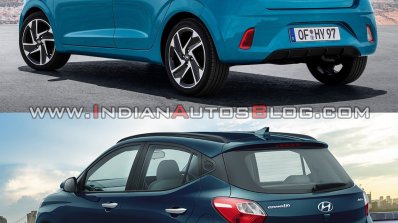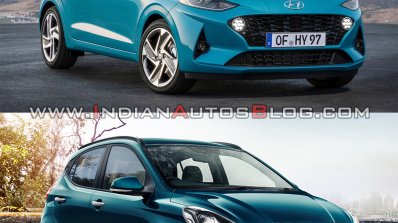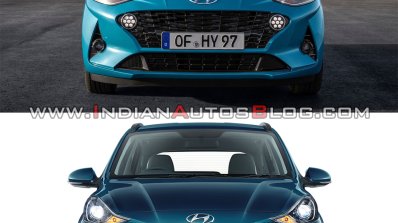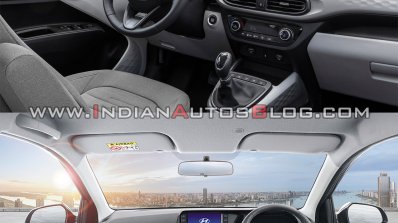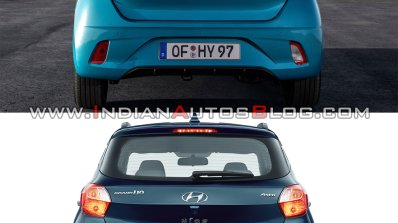Euro-spec 2019 Hyundai i10 vs. Hyundai Grand i10 Nios: Design, features & specs compared
Hyundai Motor recently unveiled the European-spec 2019 i10 ahead of the world premiere scheduled to take place at the 2019 Frankfurt International Motor Show later this month. The Indian-spec third-gen i10, called the Grand i10 Nios, was launched last month on 20th. Both the models, although similar-looking, have their own unique traits and have been customised to cater to a different set of audiences. In the report below we get down to brass tacks and find out how different both the models are in details.
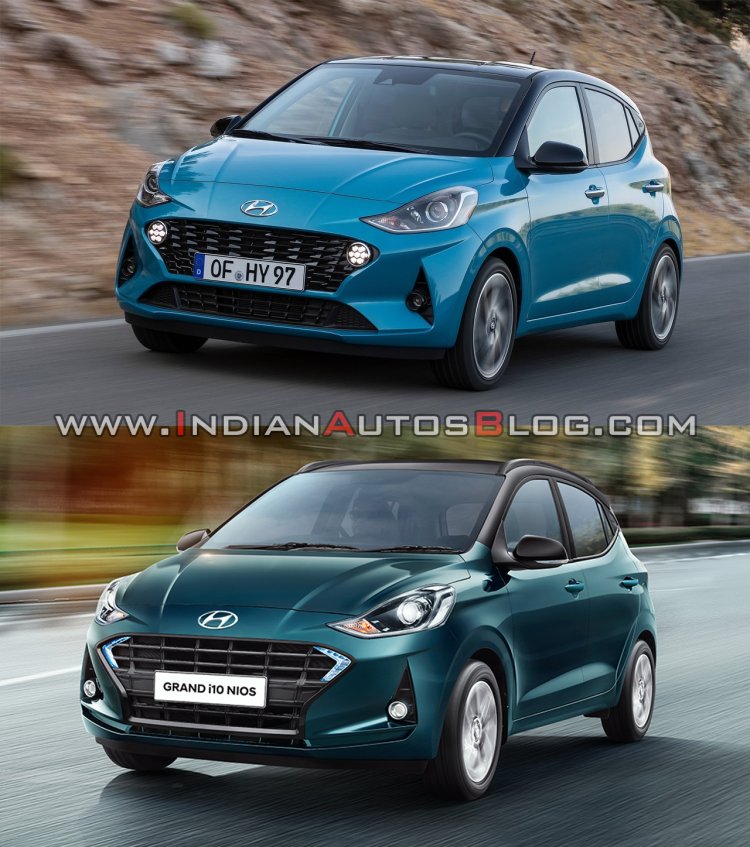
Design
Hyundai has used a much stylish and expressive design language for the third-gen i10 range. While the Grand i10 Nios is already a looker, the Euro-spec i10 looks snazzier and more appealing thanks to the use of certain styling elements like dual-tone colour combination, differently styled alloys, sportier front grille and different DRLs. The overall design of both cars, unlike in the second generation, is the same.
Coming to the interior, there are no major differences which set the cars apart, except for the instrument console. The Grand i10 Nios has a digital speedometer a digital fuel gauge, while the same elements in the i10 are analogue units. The Euro-spec i10 instrument panel with an MID placed in the middle, even though being conventional, looks more sophisticated. Furthermore, both share the same dashboard layout with a centrally mounted 8-inch touchscreen infotainment display, ‘honeycomb’ 3D patterned décor on the dashboard and door panels, compact steering wheel and grey dual-tone upholstery among others.
Comparing the dimensions, the Hyundai Grand i10 Nios is 3,805 mm long, 1,680 mm wide and 1,520 mm tall. The Euro-spec model is much shorter in length at 3,670 mm and slightly lower with a height of 1,480 mm. The width is the same - 1,680 mm. The wheelbase of the Euro-spec car, at 2,425 mm, is slightly shorter than the Nios' 2,450 mm. The boot volume of these iterations is 252 litres and 260 litres respectively, and so, here too, the India-made version wins.
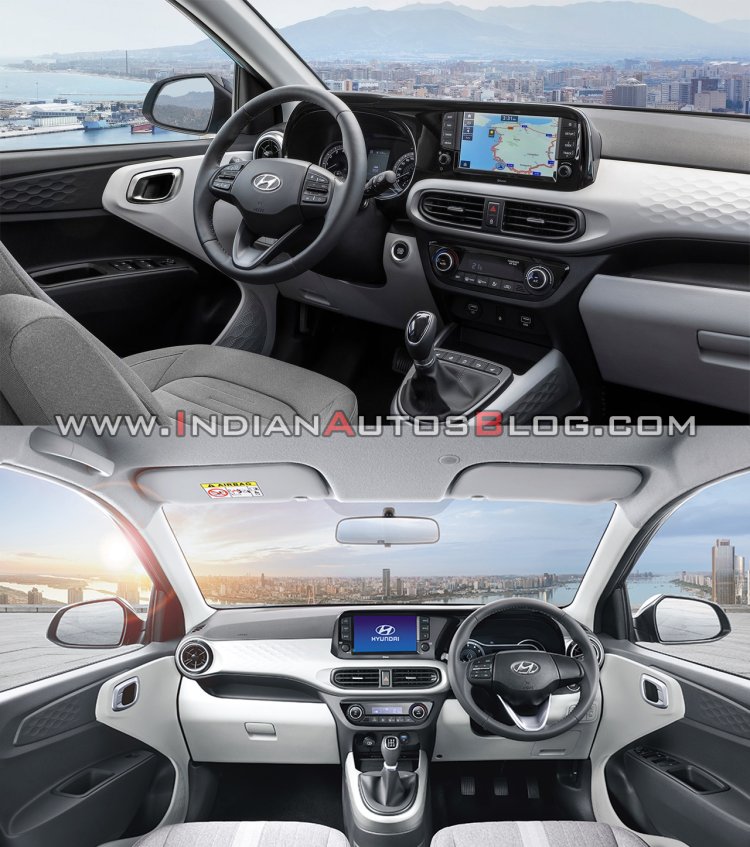
Features
In terms of features, both the cars benefit from the largest in segment 8-inch colour touchscreen which supports Apple CarPlay and Android Auto connectivity. Both the cars also get first-in-segment wireless phone charging. In addition the Euro-spec model gets Bluelink telematics which allows safety, control and connectivity operations through a smart phone app. It also offers ‘Find My Car’ functionality which permits the user to search for the vehicle in a crowded parking place. On the other hand, the Grand i10 Nios is offered with similar i-Blue Smartphone App support. Unlike the i10, it doesn't offer satellite navigation, though.
In terms of safety, the European-spec model clearly excels with features such as Forward Collision-Avoidance (FCA), High Beam Assist (HBA), Lane Keep Assist System (LKAS), Driver Attention Warning (DAW) and the Intelligent Speed Limit Warning (ISLW). All these features are unheard of in ordinary cars in India.
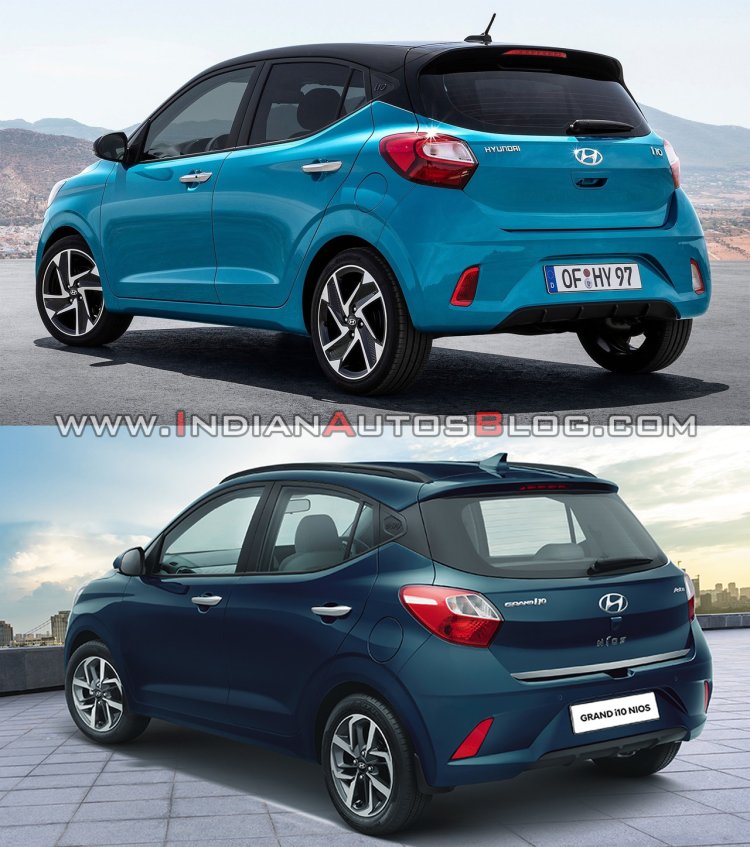
Also Read: 2020 Hyundai Verna (facelift) officially revealed, on sale in India next year
Engines
The Hyundai Grand i10 Nios is available with a 1.2-litre naturally aspirated four-cylinder petrol engine which delivers 83 PS of maximum power at 6,000 rpm and 114 Nm of peak torque at 4,000 rpm and a 1.2-litre turbocharged three-cylinder diesel engine churning out 75 PS at 4,000 rpm and 190 Nm of torque at 1,750-2,250 rpm. Both the engines come with a common 5-speed manual and 5-speed automated manual transmission choices.
The Euro-spec all-new Hyundai i10 comes with a 1.0-litre MPi three-cylinder engine and a 1.2-litre MPi four-cylinder engine. The former makes about 67 PS of maximum power and 96 Nm of torque and the latter puts out 84 PS and 118 Nm torque. Both the engines feature Idle Stop and Go (ISG) engine stop-start system. The transmission choices are the same.
